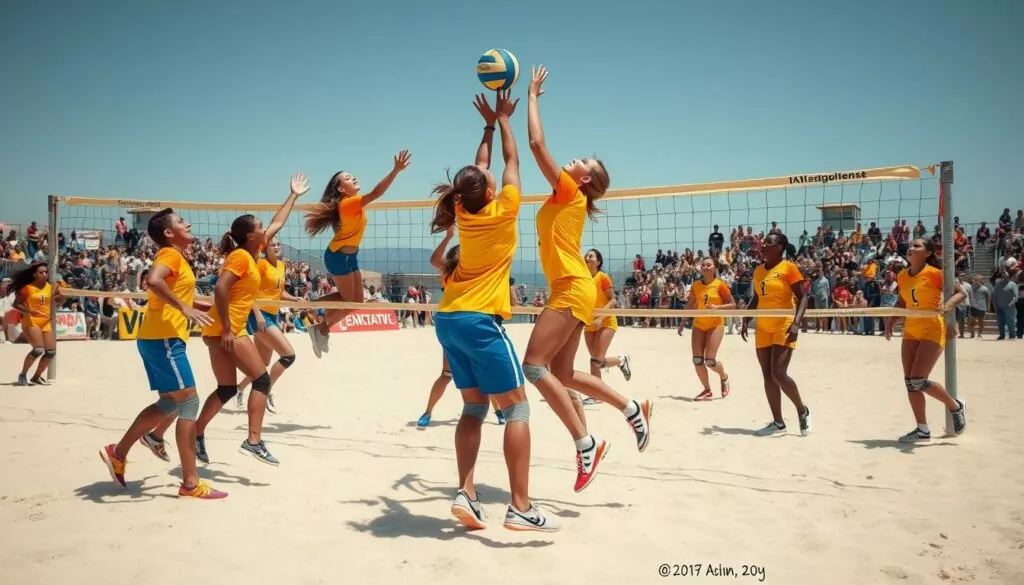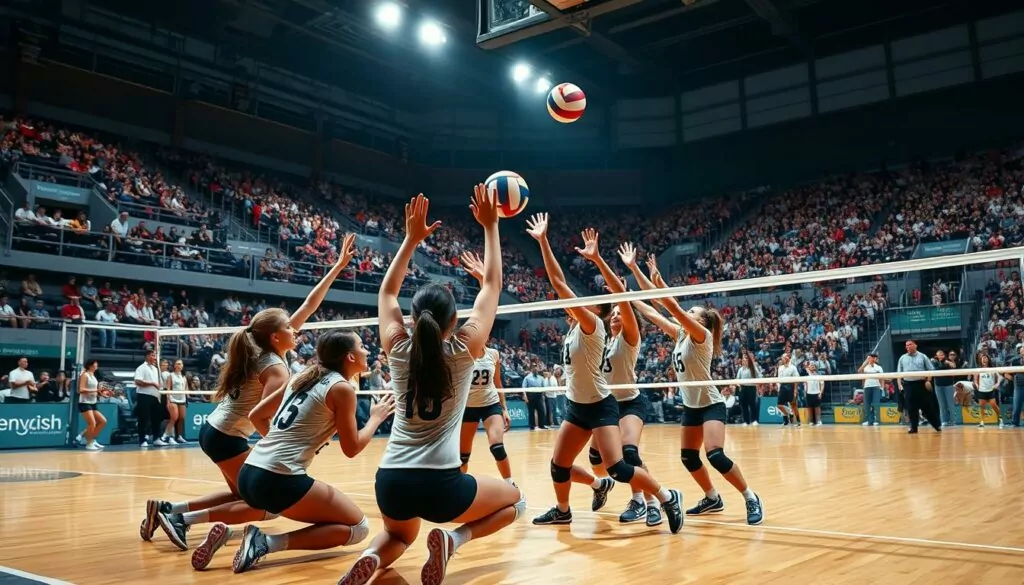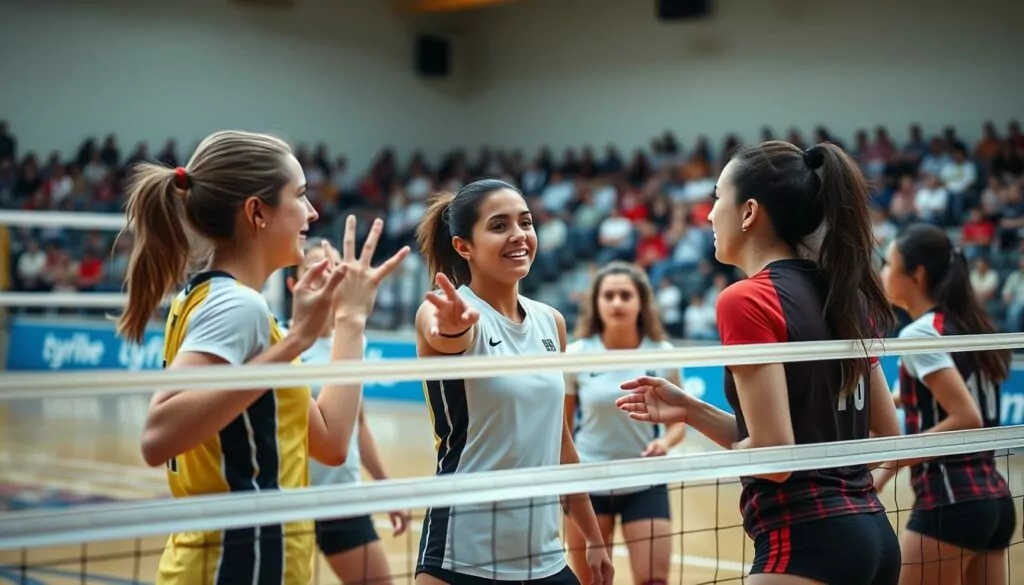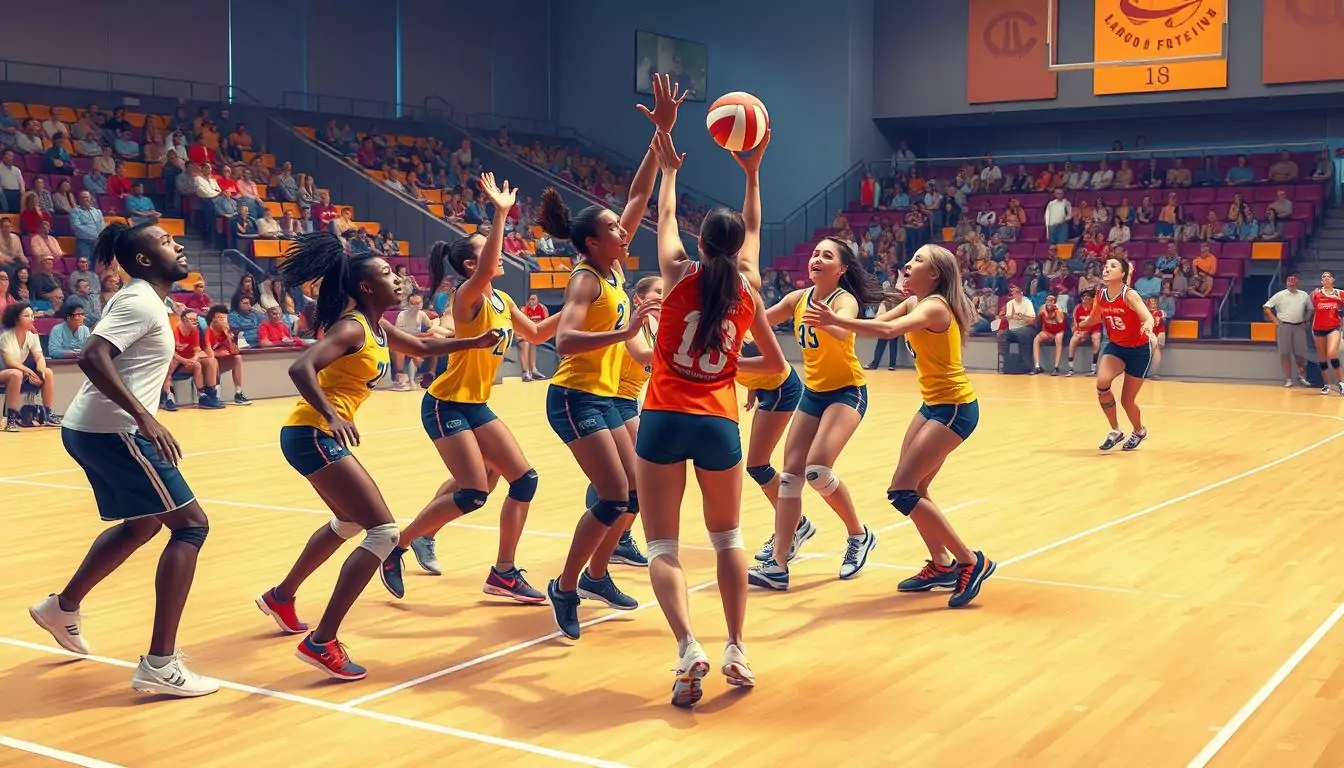I remember the first time I stepped onto a volleyball court. The energy was electric, but I felt lost. Six players, one ball, and a net between us. It wasn’t until our coach gathered us for a huddle that I realized the true essence of the game. “Volleyball isn’t about individual stars,” she said. “It’s about how well we work together.” That moment sparked my fascination with the importance of teamwork in volleyball.
As I grew in the sport, I witnessed firsthand how volleyball team dynamics could make or break a game. From perfectly timed sets to coordinated defensive plays, every successful point was a testament to our collective effort. The thrill of a well-executed play, where each player fulfilled their role flawlessly, became addictive.
Over time, I learned that volleyball isn’t just about hitting the ball over the net. It’s a complex dance of communication, trust, and mutual support. Each player brings unique skills to the court, but it’s how we blend these skills that truly matters. The importance of teamwork in volleyball goes beyond scoring points; it’s about creating a synergy that elevates everyone’s game.
Key Takeaways
- Teamwork is the backbone of successful volleyball
- Effective communication is vital for on-court coordination
- Trust between players enhances overall performance
- Each player’s role contributes to the team’s success
- Synchronized movements lead to better gameplay
- Understanding team dynamics improves strategy execution
Understanding the Foundation of Volleyball Team Dynamics

Volleyball team dynamics form the backbone of a successful squad. I’ve seen firsthand how a group of individual players can transform into a cohesive unit through effective team building. Let’s dive into the key elements that shape these dynamics on the court.
Basic Elements of Team Coordination
Coordination is crucial in volleyball. Players must move in sync, anticipate each other’s actions, and react quickly. This synchronization comes from practice and understanding each teammate’s strengths and tendencies.
Role Distribution on the Court
Each player on a volleyball team has a specific role. The setter orchestrates the offense, while hitters execute attacks. Liberos excel in defense, and middle blockers protect the net. Understanding these roles is key to smooth team operations.
| Position | Primary Responsibility | Key Skills |
|---|---|---|
| Setter | Orchestrate offense | Ball handling, decision-making |
| Outside Hitter | Attack from left side | Jumping, power hitting |
| Libero | Defensive specialist | Passing, digging |
| Middle Blocker | Net defense | Blocking, quick attacks |
Building Trust Between Players
Trust is the glue that holds volleyball team dynamics together. It’s built through consistent performance, open communication, and shared experiences both on and off the court. Team building exercises can accelerate this process, fostering a supportive environment where players rely on each other.
“Trust is earned when actions meet words.” – Anonymous Volleyball Coach
By focusing on these foundational elements, teams can develop strong dynamics that lead to success on the volleyball court.
The Importance of Teamwork in Volleyball

Teamwork is the backbone of volleyball success. I’ve seen firsthand how a well-coordinated team can outperform a group of talented individuals. Let’s dive into the key aspects that make teamwork crucial in this sport.
Synchronized Movement and Positioning
In volleyball, players must move as one unit. Each position on the court requires precise timing and coordination. A successful team anticipates each other’s movements, creating a seamless flow of play. This synchronization is vital for both offense and defense, forming the foundation of any solid volleyball strategy.
Collective Decision Making
Quick thinking is essential in volleyball. Teams that excel at collective decision making often come out on top. Players must read the game, communicate rapidly, and adjust their strategy on the fly. This shared responsibility for game decisions strengthens team bonds and improves overall performance.
Support Systems During Play
A strong support system is key to volleyball success. Players back each other up, covering weak spots and filling gaps. This mutual support extends beyond physical play – emotional encouragement during tough matches can make all the difference. The importance of teamwork in volleyball shines through in these moments of unity.
| Teamwork Aspect | Impact on Volleyball Performance |
|---|---|
| Synchronized Movement | Improves court coverage and play execution |
| Collective Decision Making | Enhances adaptability and strategic play |
| Support Systems | Boosts morale and reduces errors |
These elements combine to create a powerful team dynamic. By focusing on these aspects, coaches can develop a volleyball strategy that maximizes the team’s potential and leads to consistent success on the court.
Effective Communication Strategies in Volleyball

Communication in volleyball is key to winning games. I’ve seen teams with amazing skills fall apart due to poor teamwork. Let’s dive into how players can talk and work together on the court.
Verbal and Non-verbal Cues
Players use both words and actions to share info fast. A quick “Mine!” lets teammates know who’s taking the ball. Hand signals help set up plays without tipping off the other team. These cues are vital volleyball tactics that keep everyone in sync.
On-court Communication Techniques
During a match, players need to be loud and clear. Calling out “Free ball!” warns the team to get ready for an easy return. Setters might yell “Go!” to signal a quick attack. These shouts help the team react faster than their opponents.
Building a Common Language
Great teams create their own lingo. They might use code words for different plays or nicknames for positions. This shared vocabulary speeds up decision-making on the court. It’s like having a secret playbook that only your team understands.
By mastering these communication strategies, volleyball teams can move as one unit. It’s not just about individual skill – it’s how well players work together that often decides who wins the game.
Leadership and Team Chemistry Development
Leadership in volleyball goes beyond just calling plays. It’s about creating a strong team bond and pushing everyone to excel. I’ve seen firsthand how great leaders can transform a group of players into a cohesive unit.
Effective volleyball captains lead by example. They show up early, work hard in practice, and give their all during games. This dedication inspires teammates to match their effort. Good leaders also communicate clearly and positively, keeping spirits high even when facing tough opponents.
Building volleyball team cohesion takes time and effort. Smart leaders organize team-building activities off the court. These could be simple things like group dinners or volunteer work. These shared experiences help players connect on a personal level, which translates to better teamwork during matches.
“The strength of the team is each individual member. The strength of each member is the team.” – Phil Jackson
I’ve found that the best volleyball teams have multiple leaders. Some players lead vocally, while others lead silently through their actions. Embracing different leadership styles allows everyone to contribute to the team’s success in their own way.
Remember, leadership in volleyball isn’t just about winning games. It’s about creating a positive environment where every player feels valued and motivated to improve. When done right, it leads to a team that’s greater than the sum of its parts.
Strategic Team Formations and Rotations
Volleyball strategy and tactics are crucial for team success. I’ve seen how effective formations and rotations can make or break a game. Let’s dive into the key elements that shape a team’s performance on the court.
Offensive Formations and Team Coordination
In volleyball, offensive formations are the backbone of scoring points. The 5-1 formation is popular, with one setter and five hitters. This setup demands precise coordination and communication among players. Each position has specific responsibilities, creating a seamless offensive flow.
Defensive Strategies and Player Support
Defense is just as important as offense in volleyball tactics. The most common defensive strategy is the rotation defense. Players shift positions based on the opponent’s attack, covering all areas of the court. This requires quick thinking and mutual support among teammates.
| Defensive Position | Primary Responsibility | Secondary Responsibility |
|---|---|---|
| Libero | Back Row Defense | Serve Reception |
| Middle Blocker | Net Defense | Quick Attacks |
| Outside Hitter | Spike | Block |
Rotation Dynamics and Player Adaptation
Rotations are a unique aspect of volleyball strategy. Players must adapt to different positions as they rotate clockwise after each side-out. This requires versatility and a deep understanding of multiple roles. Effective rotations maintain a balance between offense and defense, keeping the opposing team guessing.
Mastering these strategic elements elevates a team’s performance. It’s not just about individual skills, but how well players work together within these frameworks. That’s the essence of volleyball tactics.
Conclusion
The importance of teamwork in volleyball can’t be overstated. Throughout this article, we’ve explored how synchronized movements, collective decision-making, and effective communication form the backbone of a successful volleyball team. Volleyball training isn’t just about honing individual skills; it’s about building a cohesive unit that moves and thinks as one.
From offensive formations to defensive strategies, every aspect of the game relies on players working together seamlessly. The trust and chemistry developed among teammates often make the difference between victory and defeat. As coaches and players, we must prioritize team-building exercises alongside technical drills in our volleyball training regimens.
By fostering a collaborative environment, teams can unlock their full potential on the court. Remember, in volleyball, no player is an island. The synergy created when six players come together with a shared goal is truly remarkable. So, let’s embrace the power of teamwork and watch our volleyball skills soar to new heights!
